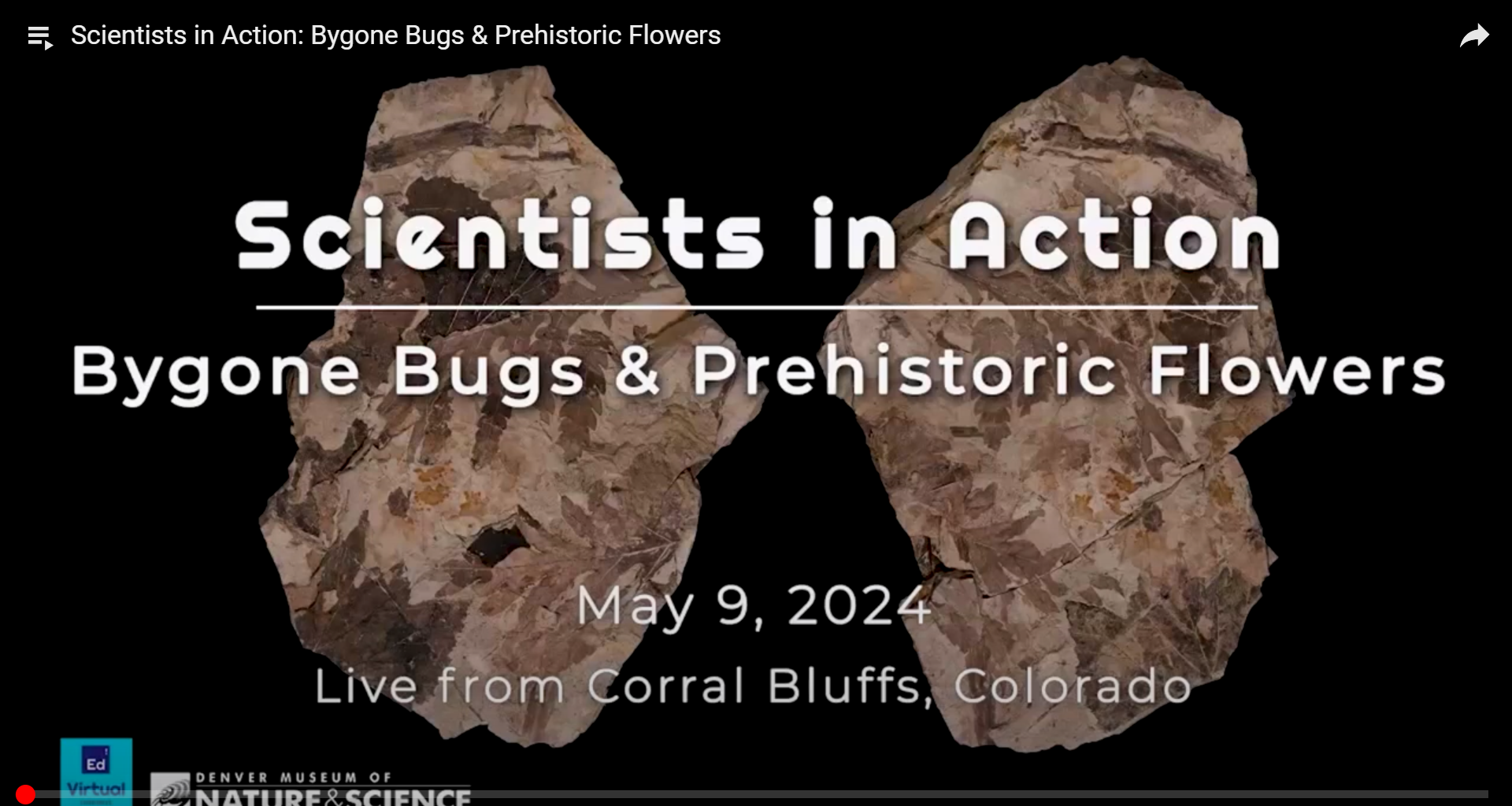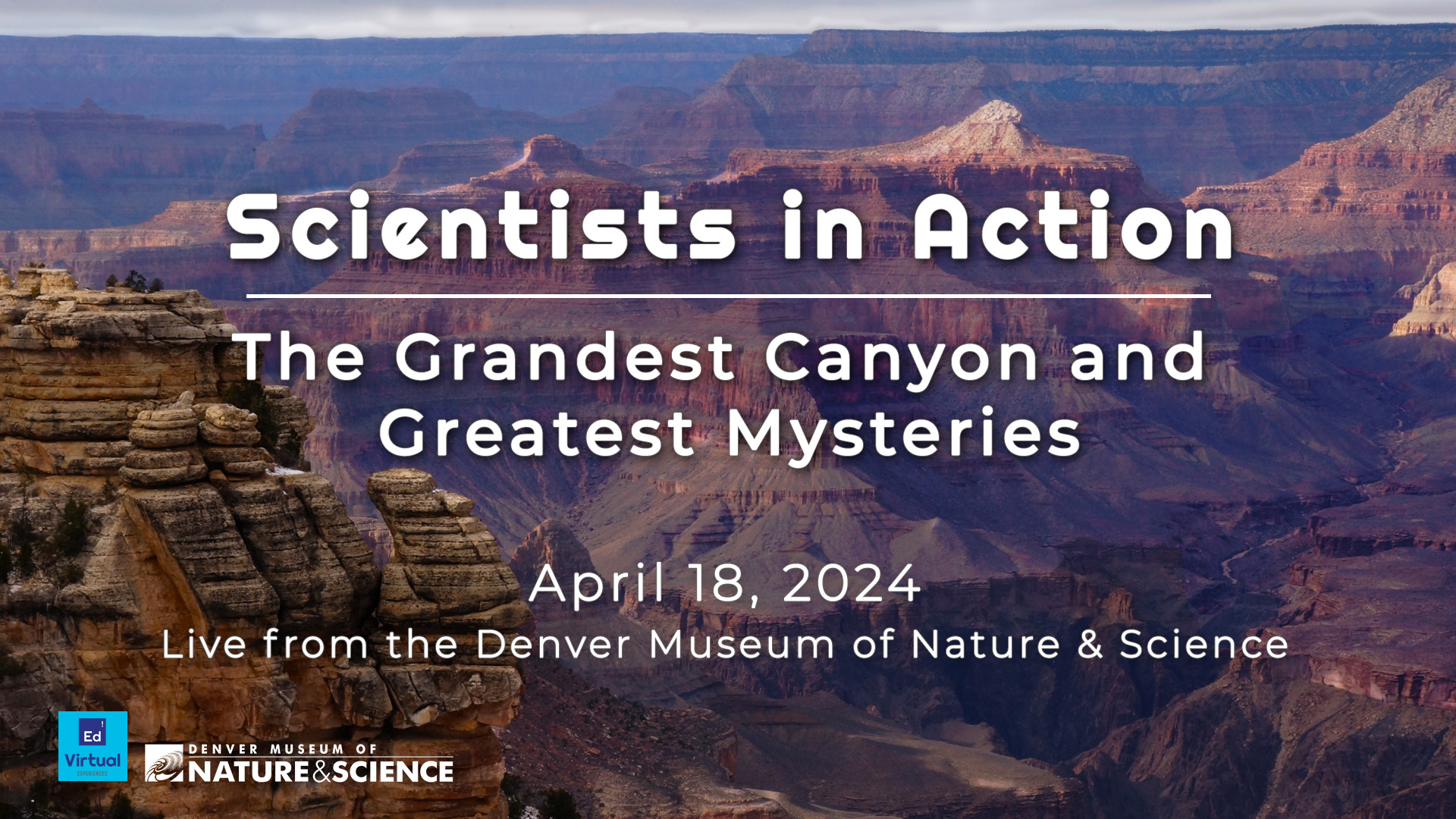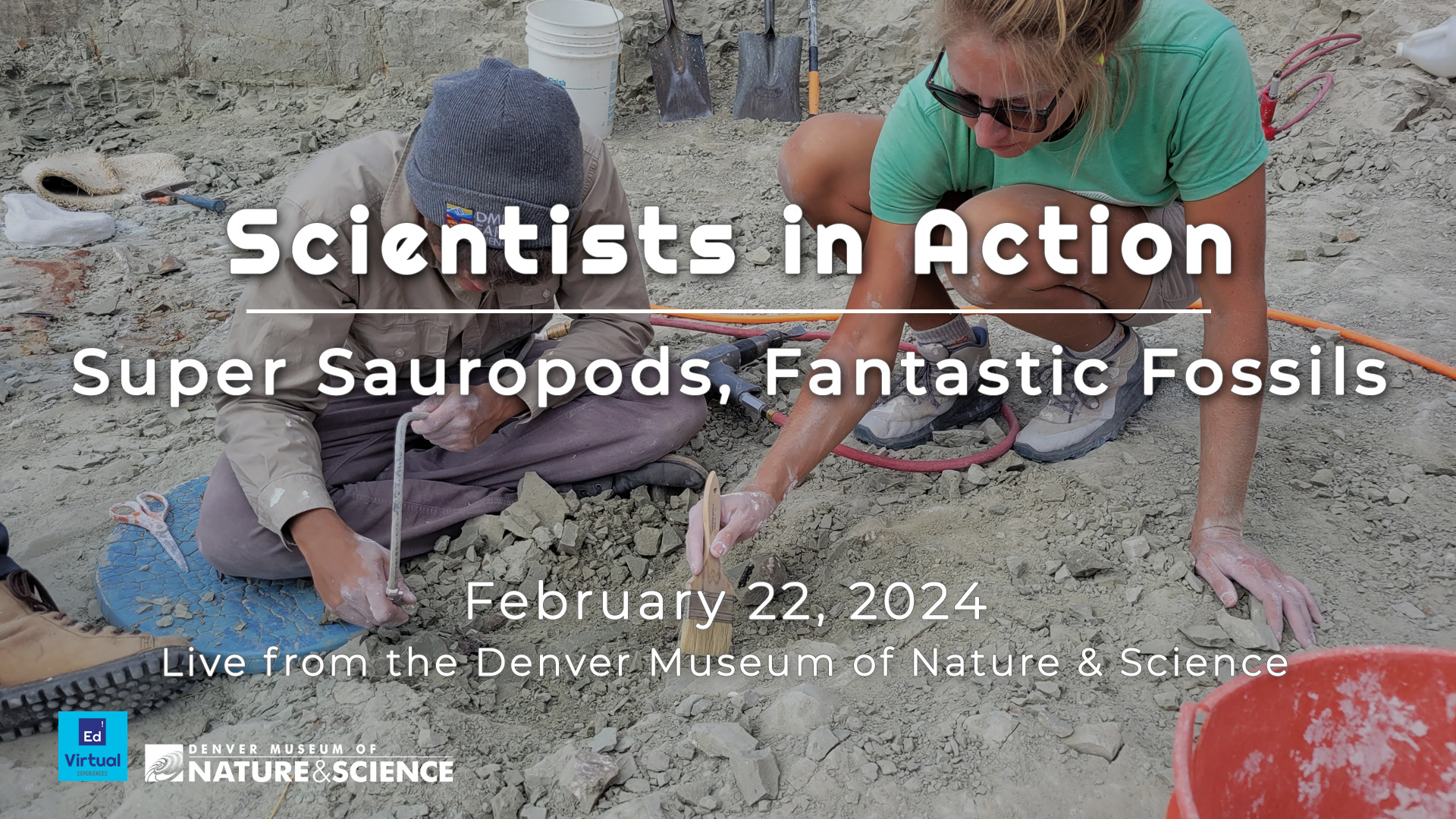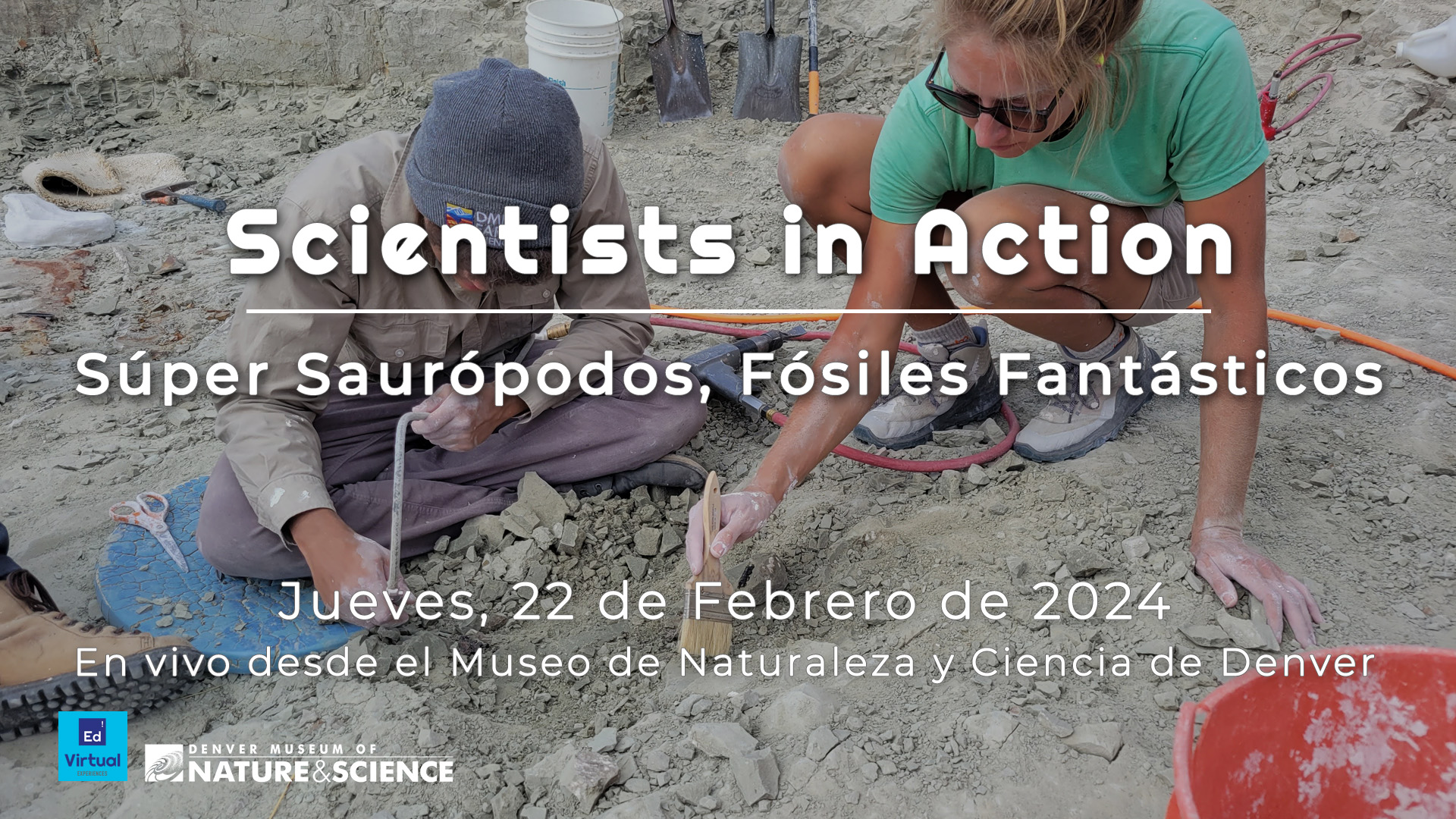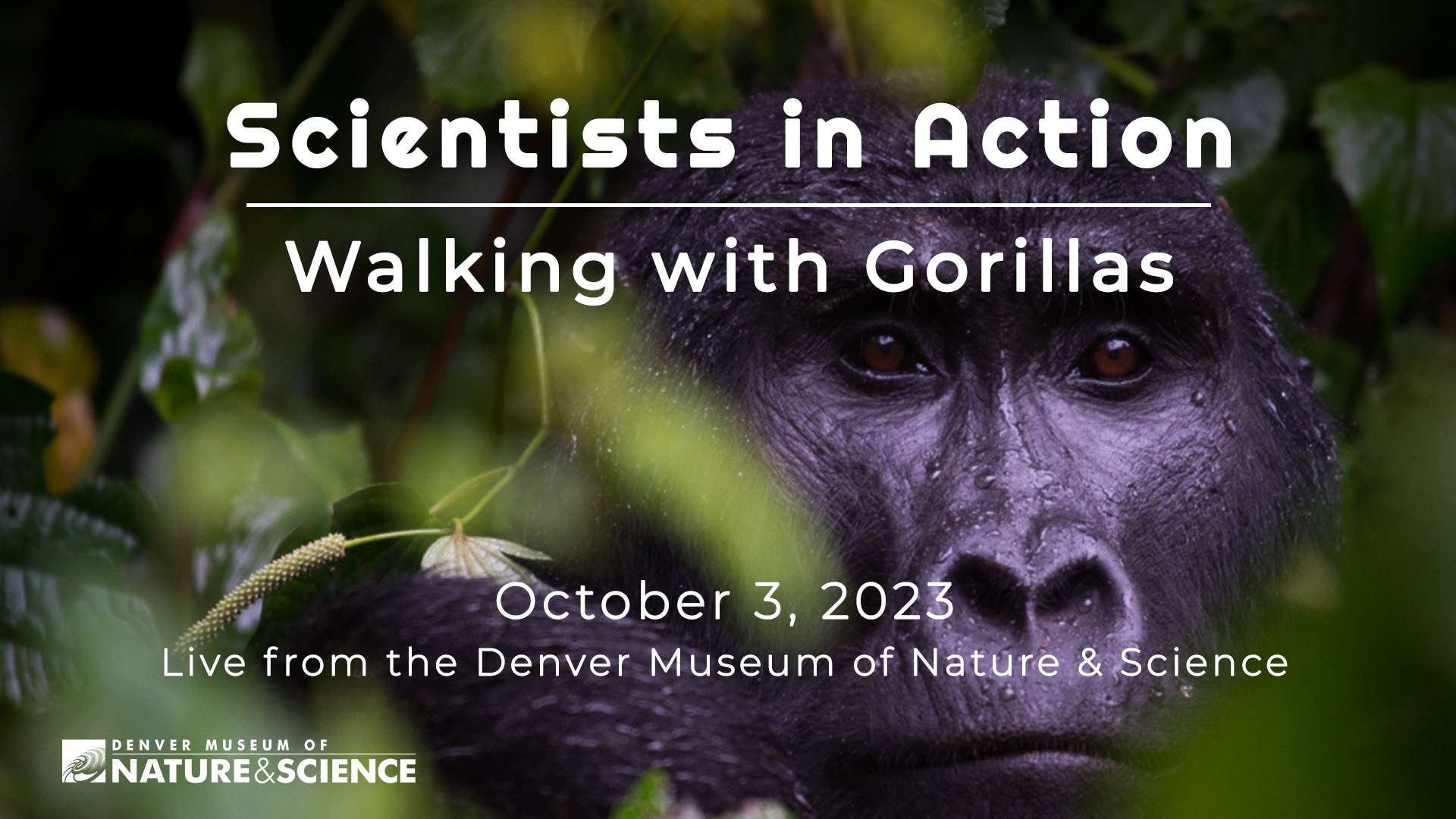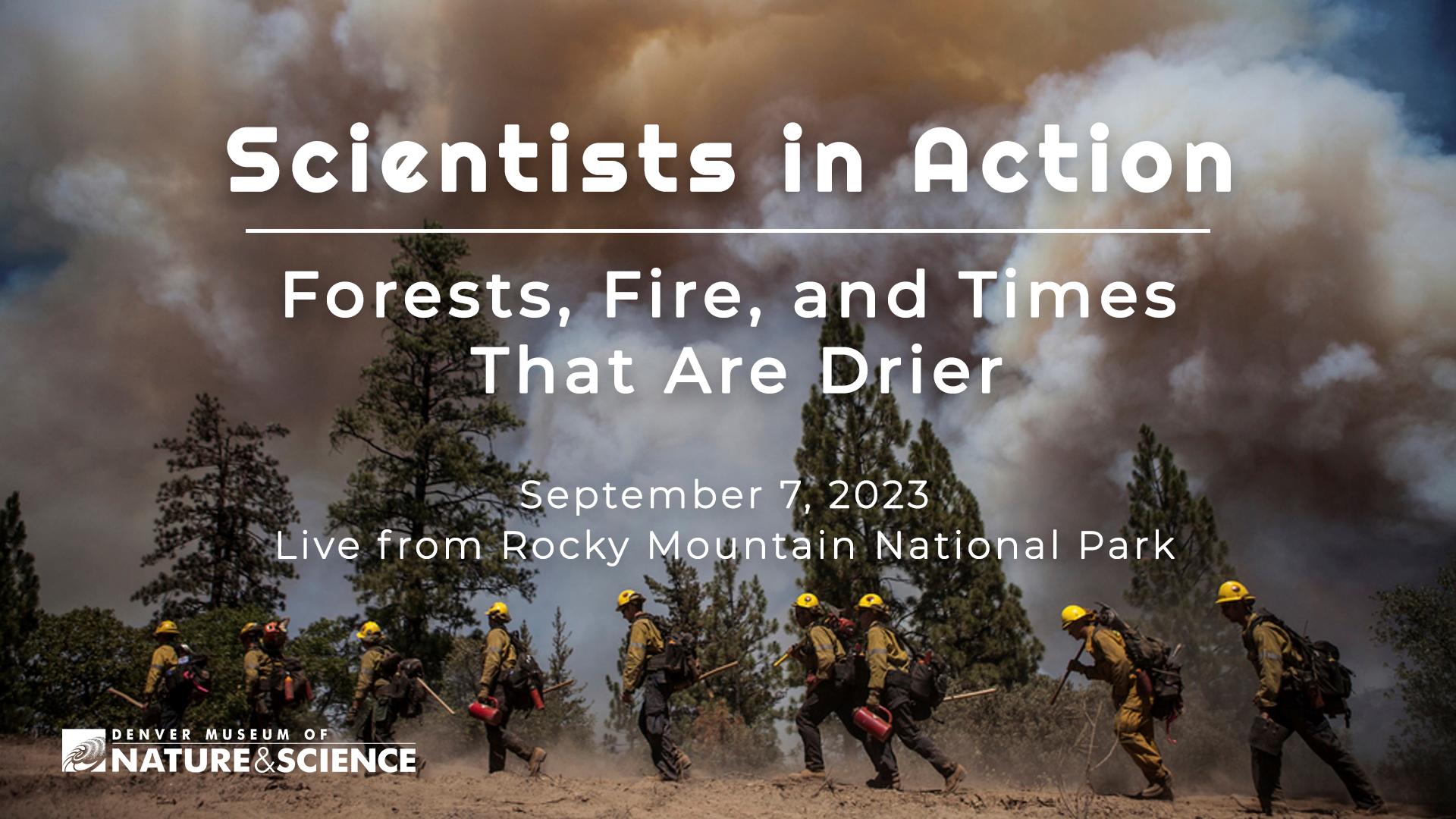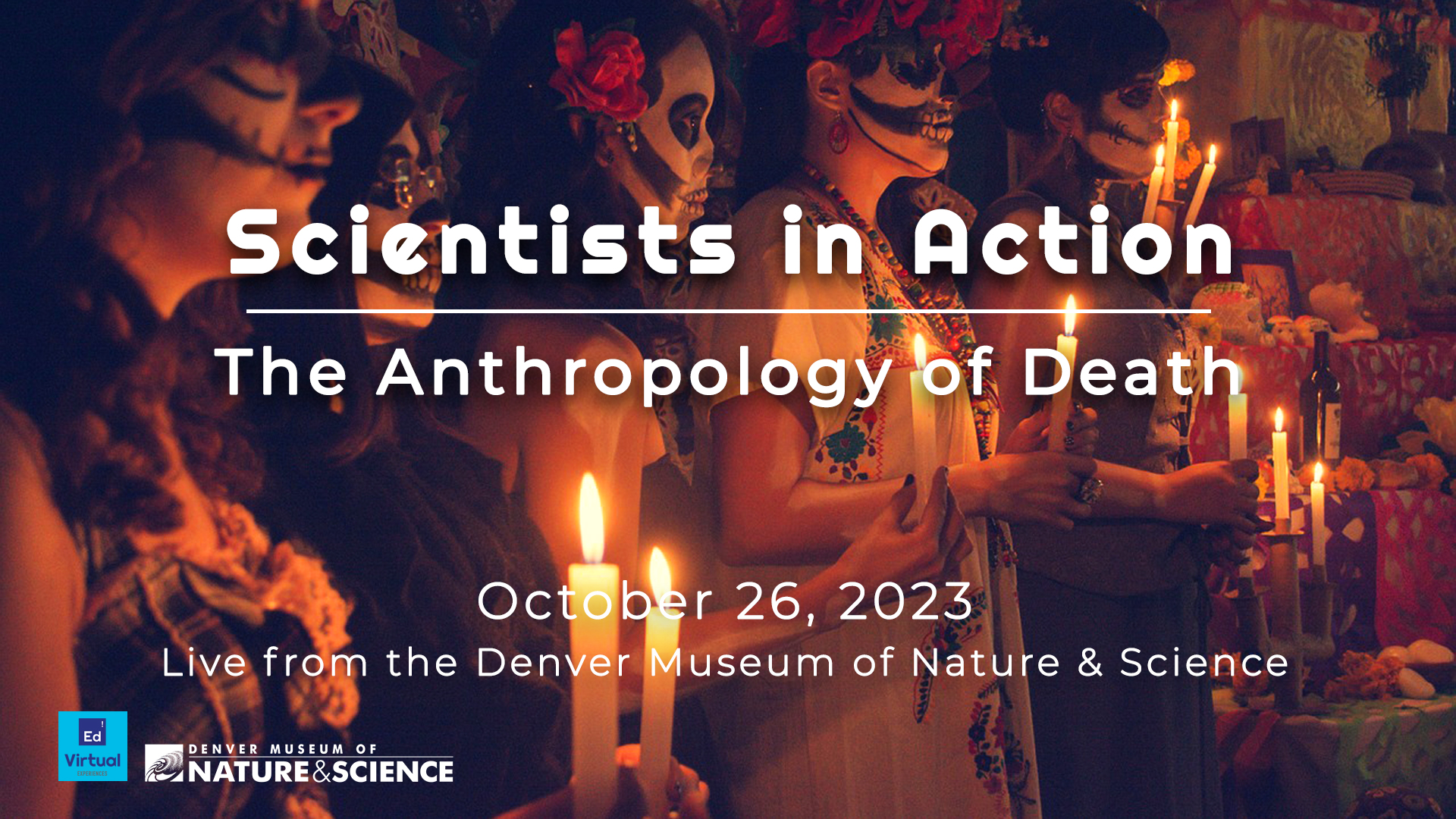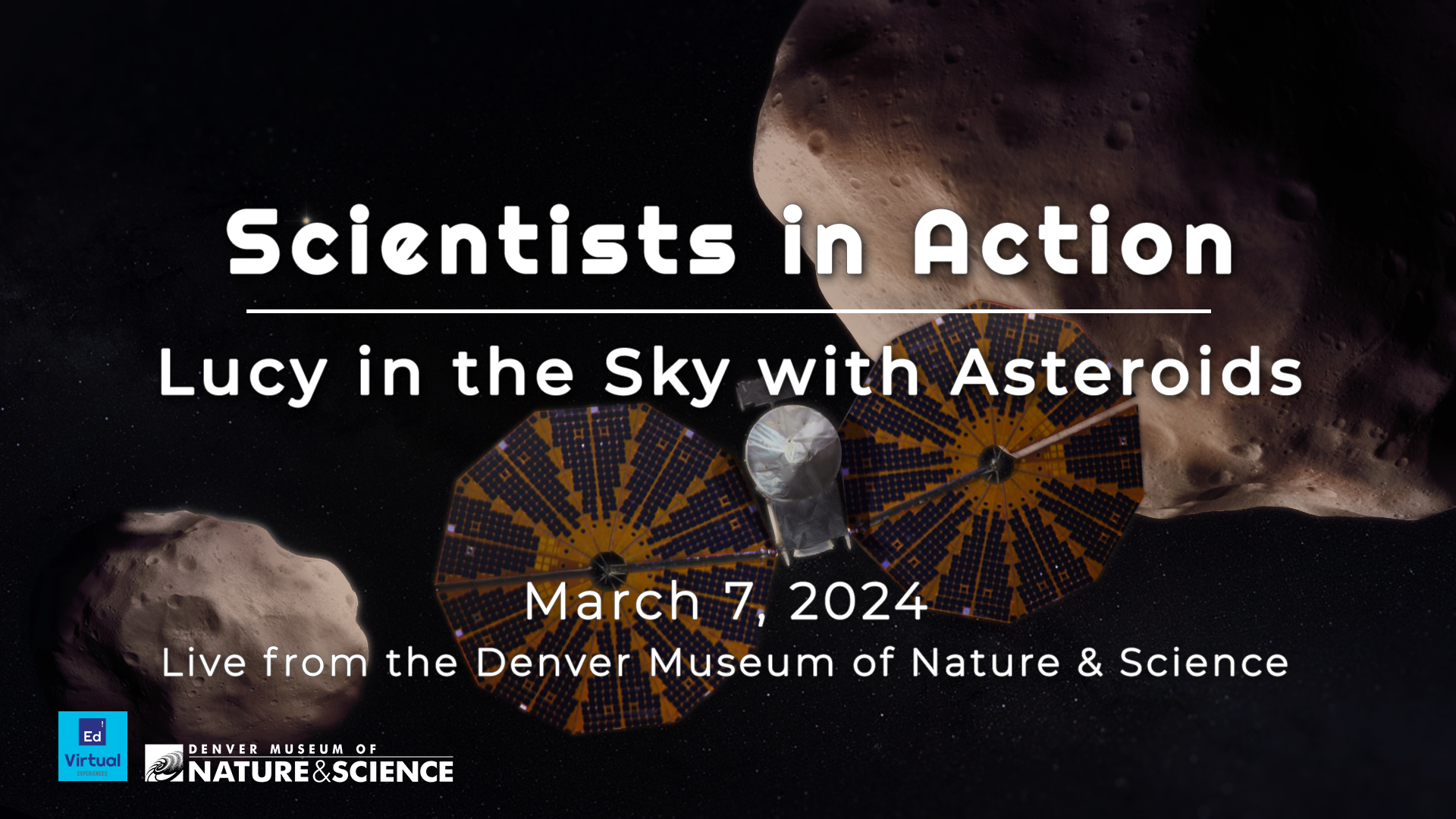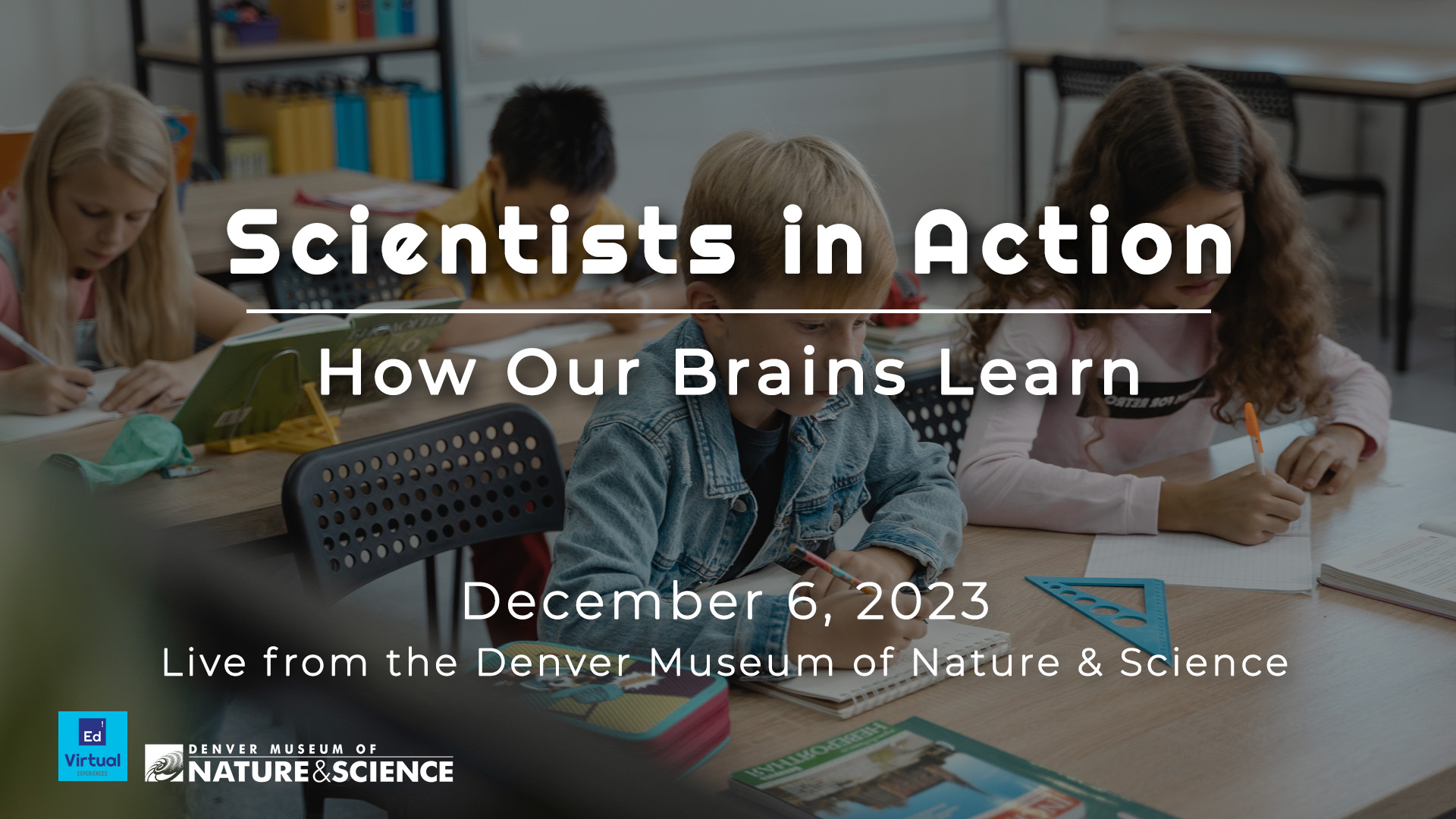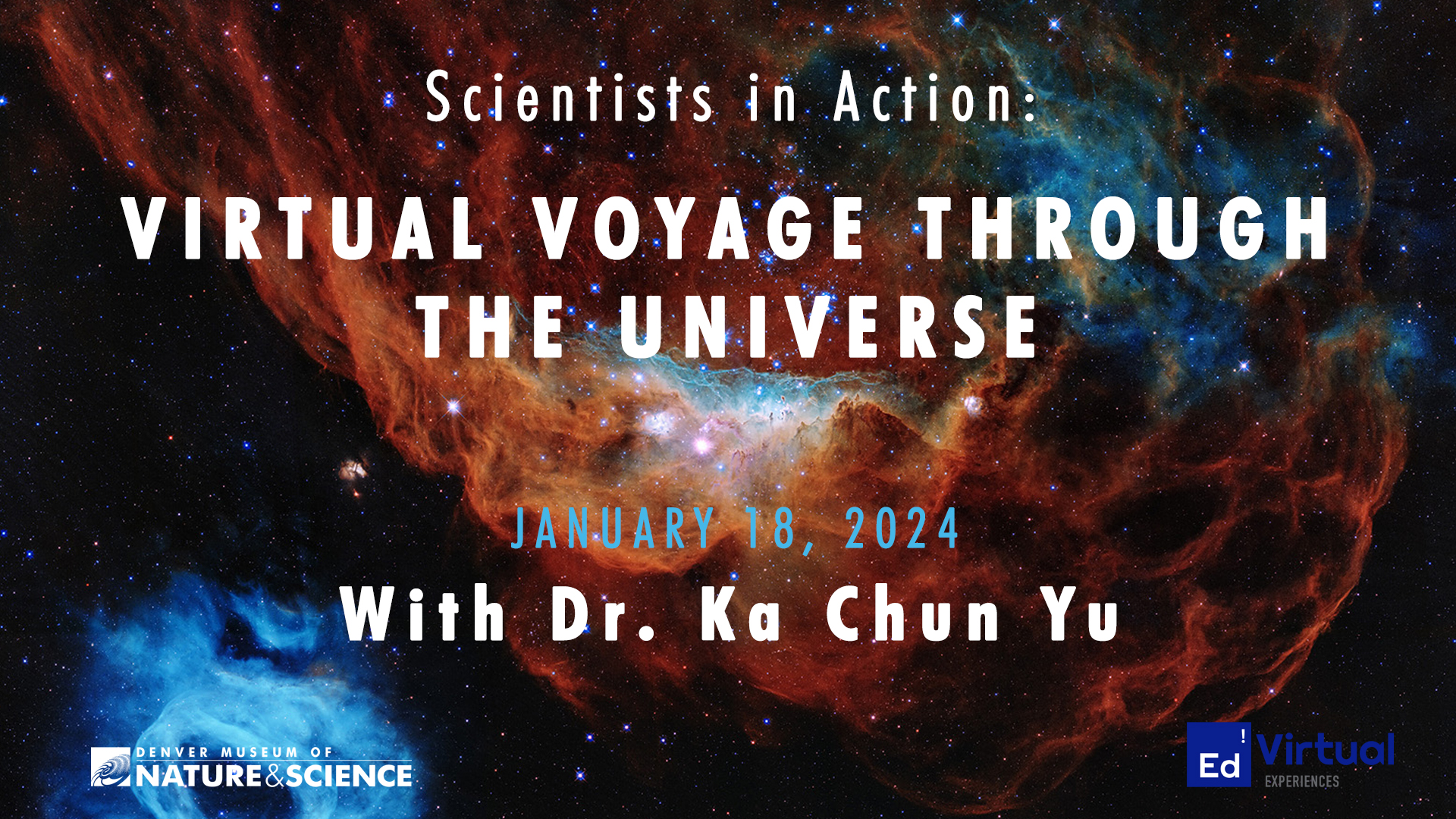Join the Denver Museum of Nature & Science's FREE monthly virtual field trip with Scientists in Action! Using Zoom webinar format, we'll transport your students to labs, fields, and behind-the-scenes at the Museum. Each month features a new scientist and an area of science they study. Student questions help guide the program, allowing students to engage and see their curiosity honored as they chat with scientists of all backgrounds. Anyone can be a scientist and it just might start with one of our virtual programs - register your class today!
Dates: Different each month, though typically on a Thursday
Times: We offer four, 45-minute sessions starting at 9 a.m., 10 a.m., 11 a.m. and 1 p.m. Mountain Time
Cost: Scientists in Action are FREE, always!
Age: Recommended for grades 4-12, but all are welcome
Format: Zoom webinar

The Connection Between the Arts and Science: A Woman's Experience
Date: Tuesday, October 8, 2024
Time: 10:30 a.m. - 11:30 a.m. Mountain Time
Join the Denver Museum of Nature & Science for a transformative and special edition virtual program that explores the powerful connection of Indigenous traditional knowledge, the arts, and science. Featuring four incredible Indigenous authors with powerful stories and cultural knowledge—Angeline Boulley, Kinsale Drake, Robin Wall Kimmerer, and Matika Wilbur—this event is a must-attend for anyone interested in the rich tapestry of Indigenous knowledge and the bridge between art and science. Students will have the opportunity to hear from the diverse panel of women who are currently shaping the literary landscape and empowering others to explore the importance of personal story. Register your class for this program today!

Scientists in Action: Brilliant Bats and What They Do
Date: Thursday, October 24, 2024
Time: 9 a.m., 10 a.m., 11 a.m., and 1 p.m. Mountain Time
From vampires to witchcraft, bats sometimes get a bad rap. But is their spooky reputation deserved? Register your class to chat about bat anatomy and physiology with Andie Carrillo, Zoology Preparator for the Denver Museum of Nature & Science, who works with the order Chiroptera...inside and out. Why are bats important to their ecosystems? How do we study bats and other animals at the Museum? Hang around (or upside down) and you just might have your mind changed by these incredible flying mammals. Register your class today for this behind-the-scenes virtual field trip!

Scientists in Action: Mighty Mutations and Dazzling DNA
Date: Thursday, November 21, 2024
Times: 9:00am, 10:00am, 11:00am, 1:00pm Mountain Time
Did you know that you share over 60% of your genetic makeup with a banana? And compared to other humans, you have 99.9% identical genes? It makes you wonder: if humans are separated from one another by a mere .01%, how can we still be so different? And what exactly do these different genes control? Join Dr. Bridget Chalifour, genomics scientist at the Denver Museum of Nature & Science, to learn more about the incredible nature of genetics, mutations, and all the ways they make us unique. Register your classes today and get ready to talk DNA!

Scientists in Action: Bizarre Beasts and Dinosaurs from Madagascar
Date: Thursday, December 12, 2024
Time: 9 a.m., 10 a.m., 11 a.m., and 1 p.m. Mountain Time
When you think of animal life in Madagascar, is the first thing that comes to mind fossils? If you said “no” and instead thought of dancing lemurs or adorable tenrecs, you might not be alone. But while the country is rich in its biodiversity today, it has a rich history of biodiversity in the past as well – the prehistoric past, in fact! Join the Denver Museum of Nature & Science to talk with some of the scientists studying Madagascar's former inhabitants: basketball-sized armored frogs, mammals with Swiss-cheese skulls, dome-headed dinosaurs, and much more. What do these amazing creatures tell us about the dino days? And what kind of international science community is built as humans study these fascinating fossils? Register today!

Scientists in Action: Looking for Life in the Universe
Date: Thursday, January 23, 2025
Time: 9 a.m., 10 a.m., 11 a.m., and 1 p.m. Mountain Time
We all love a good extraterrestrial story, whether they are friend or foe, darling or dangerous, humanoid or humongous... but what do we actually know about the potential for alien life and what do astrobiologists look for? Join space science curator Dr. Ka Chun Yu as we virtually visit both our home planet and the far reaches of our galaxy to explore what life could be like in other parts of our universe. Spoiler alert: they likely won’t have shiny spacesuits or laser guns. Student questions will help guide this virtual field trip that is guaranteed to be outta’ this world. Register today!

Scientists in Action: Super Sauropods, Fantastic Fossils
Date: Thursday, February 20, 2025
Time: 9 a.m., 10 a.m., and 1 p.m. Mountain Time, ENGLISH only.
11 a.m. Mountain time, SPANISH only.
Big beyond belief, sauropod dinosaurs are amongst the largest animals to have ever walked the planet, living over 200 million years ago. While today their fossilized bones remain massive, they are not nearly as strong as they were while in use during their dino-heyday. Over time, dinosaur bones become fragile and require lots of special care. This is where Museum scientists come in! Join us virtually behind-the-scenes of the Museum and visit with the scientists working to stabilize and study these fabulous fossils. Student questions will help guide this paleo-themed adventure. Register today; dino-mite!

Scientists in Action: The Art and Ethics of Conservation
Date: Thursday, March 13, 2025
Time: 9 a.m., 10 a.m., 11 a.m., 1 p.m. Mountain Time
Join the Denver Museum of Nature & Science as we travel behind-the-scenes and deep below the Museum to visit our Avenir Conservation Center team. Guided by a code of ethics intended to protect the integrity and authenticity of human objects, these scientists artfully blend culture, history, art, and science in this advanced level of art conservation. But how exactly do the conservators identify, care for, and potentially return these collection items? And just what kinds of items are we talking about exactly? Register today and get ready to ask questions and learn something new!

Scientists in Action: Hidden Gems
Date: Thursday, April 24, 2025
Time: 9 a.m., 10 a.m., 11 a.m., and 1 p.m. Mountain Time
Below ground and behind the scenes at the Denver Museum of Nature & Science is an extensive mineral collection, with over 20,000 specimens, including the largest collection of diamonds at any museum in the entire world! Dr. James Hagadorn, curator of geology, has the privilege of working with these rarely seen objects. Connect live for a glimpse at this incredible collection and learn about what a seemingly ordinary rock can reveal about the past, present, and future of our planet. Student questions will be the compass in this scientific treasure hunt!

Scientists in Action: The Demise of the Dinosaurs and Expansion of Mammals
Date: Thursday, May 22, 2025
Time: 9 a.m., 10 a.m., 11 a.m., and 1 p.m. Mountain Time
Sixty-six million years ago, life on earth had a catastrophically bad day. Following the impact of an asteroid six miles in diameter, non-avian dinosaurs and countless other critters were wiped from the face of the planet. For survivors, life shortly after was grim, but in the wake of the destruction, some species eventually flourished. What was the world and life like after the asteroid? And how does one remarkable location in Colorado help scientists Dr. Tyler Lyson and Dr. Gussie Maccracken understand earth’s greatest comeback story? Student questions will help guide this virtual field trip; register your class today!
Want to watch more Scientists in Action programs? You can find a more comprehensive list on our Museum Youtube channel as well as pre-2020 videos in our archive!

